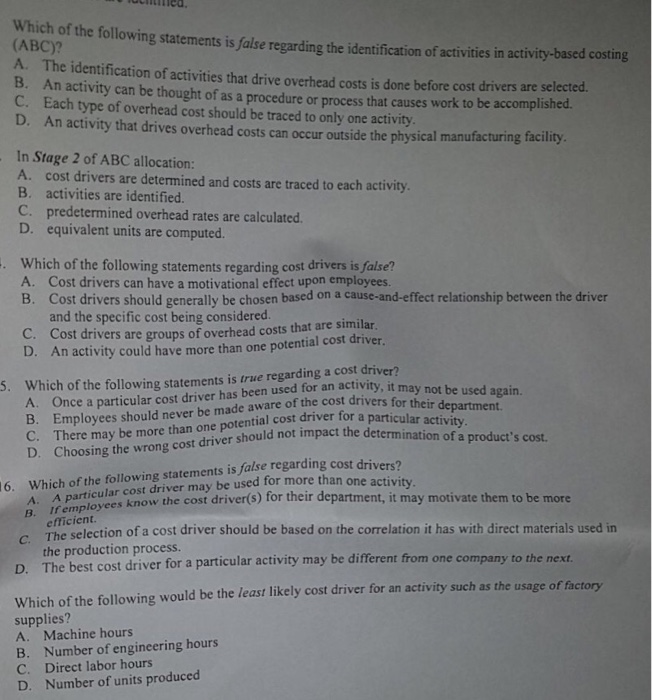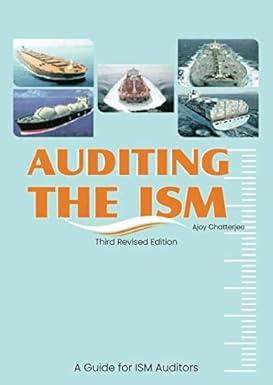Which of the following statement is false regarding the identification of activities in activity-based costing (ABC)? The identification of activities that drive overhead costs is done before cost drivers are selected. An activity can be thought of as a procedure or process that causes work to be accomplished. Each type of overhead cost should be traced to only one activity. An activity that drives overhead costs can occur outside the physical manufacturing facility. In Stage 2 of ABC allocation cost drivers are determined and costs are traced to each activity. activities are identified. predetermined overhead rates are calculated equivalent units are computed. Which of the following statements regarding cost drivers is false? Cost drivers can have a motivational effect upon employees. Cost drivers should generally be chosen based on a cause-and-effect relationship between the driver and the specific cost being considered. Cost drivers are groups of overhead costs that are similar. An activity could have more than one potential cost driver. Which of the following statements is true regarding a cost driver? Once a particular cost driver has been used for an activity, it may not be used again. Employees should never be made aware of the cost driver for a particular activity. There may be more than one potential cost driver for a particular activity. Choosing the wrong cost driver should not impact the determination of a product's cost. Which of the following statements is false regarding cost drivers? A particular cost driver may be used for more than one activity. If employees know the cost driver(s) for their department, it may motivate them to be more efficient. The selection of a cost driver should be based on the correlation it has with direct materials used in the production process. The best cost driver for a particular activity may be different from one company to the next. Which of the following would be the least likely cost driver for an activity such as the usage o f factory supplies? Machine hours Number of engineering hours Direct labor hours Number of units produced







